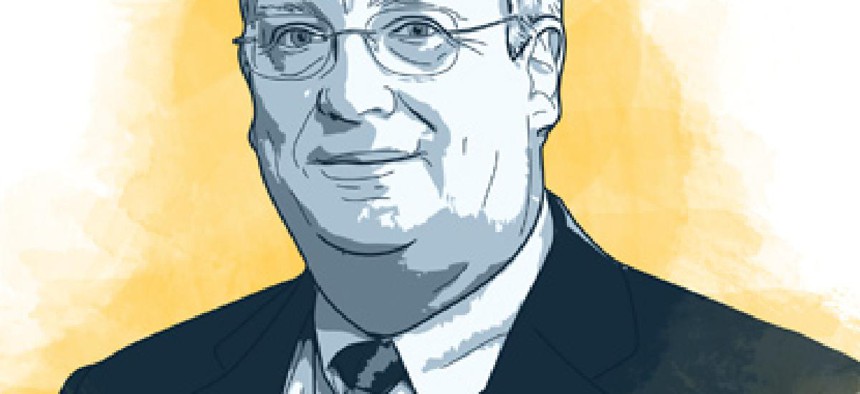Wennergren on key projects

David Wennergren, finishing 32 years of government service in his last role as the Defense Department's assistant deputy chief management officer, spoke with FCW about lessons he learned while driving major projects.

David Wennergren, finishing 32 years of government service in his last role as the Defense Department's assistant deputy chief management officer, spoke with FCW about lessons he learned while driving major projects.
How do you balance top-down leadership with listening to the customer?
One of the things that I have worked on over the years, that I'm just really, really proud of to this day, is the common access card and PKI solution for the Department of Defense. The fact is that the DoD, with a three and a half‑million person organization, has a single smartcard PKI solution for that entire organization. It would have been so easy to have developed a hundred different solutions, none of which would have worked together, and had a completely sub optimized organization.
Through a lot of change management work and a lot of really bright people, like Mary Dixon at the Defense Manpower Data Center and other folks, we created a solution that we got in place and is probably the largest, most successful smartcard implementation in the world and was the precursor to the HSPD‑12 solution, now placed across all of government.
Yet the customer that originally asked for something...they didn't ask for a smartcard. They asked for like, a security solution that would help them do a little bit more secure logon.
They didn't realize that by giving them something else, because people had the opportunity to think about what's new and what's possible, that we were able to address the need for better password‑protection kind of stuff by replacing passwords with PKI authentication.
Because we use PKI and we used a smartcard, we were able to give them a tool that allowed them to move from paper‑based processes to digital signatures. We allowed ourselves to have a common way to do physical access at bases.
If they'd only focused on delighting the customer, they would have probably bought some little key fob solution or something that would have allowed them to do the near‑term problem, but not created a future that is 10, 12 years old and still really viable for us, going forward.
You have to find ways to make sure that the IT leadership team isn't falling behind, by giving them opportunities to be able to see the future, see what the art of the possible is, and figure out how to use it.
And how do you get buy-in when pushing for solutions that are bigger, or broader, or just different from what the customer thinks they want?
Long ago, before I was doing so much IT stuff, I was in the logistics business in the Navy. When the base‑closure rounds in the '90s ended, I got the job of reorganizing the naval shore establishments that hadn't been closed.
I remember going to San Diego. The art of the process was I brought with me a few honest brokers to meet with the commanding officers of all the bases and the functional leaders there, so that they would actually have skin in the game of making the choices about their future.
I brought enough external voices that somebody could help force them out of their comfort zone -- idea generators, coming to work with the people that actually have to own the problem.
Fast‑forward two years later. Now I'm the deputy chief information officer for the Navy, before I became the CIO. I'm back in San Diego for a completely different purpose, but I end up at this briefing with all the base commanders.
You know how it is at Navy bases. Two years is like forever. It's different people. Nobody knows that this is the Wennergren that was out there meddling a couple years ago.
They brief me on all the things they were getting done in regionalizing and consolidating the shore installation management functions and how proud they were of what they had accomplished, the $40 million a year they had saved and the more efficient operations and all that kind of stuff. I told them I thought they had done a magnificent job.
When we left the meeting, the guy who traveled with me said to me, "Weren't you annoyed that they didn't realize it was you and a few other people helping force them to do it and you were in the middle of the change?"
I said, "Well no, I was actually delighted because that's the art of this light touch. If the change leader is the only person that can make it happen, then it will only last for as long as that person personally has their hands on the wheel."





